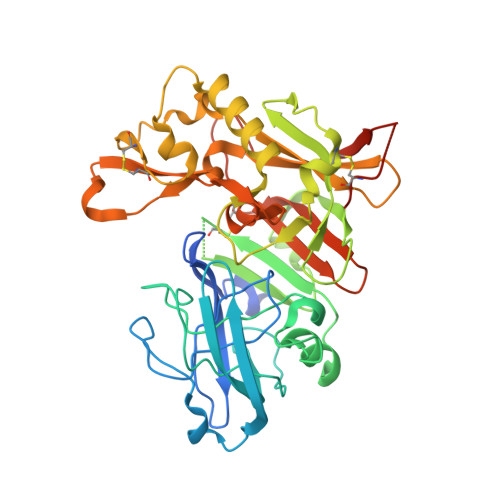Aminoimidazoles as BACE-1 inhibitors: the challenge to achieve in vivo brain efficacy.
Swahn, B.M., Holenz, J., Kihlstrom, J., Kolmodin, K., Lindstrom, J., Plobeck, N., Rotticci, D., Sehgelmeble, F., Sundstrom, M., Berg, S.v., Falting, J., Georgievska, B., Gustavsson, S., Neelissen, J., Ek, M., Olsson, L.L., Berg, S.(2012) Bioorg Med Chem Lett 22: 1854-1859
- PubMed: 22325942
- DOI: https://doi.org/10.1016/j.bmcl.2012.01.079
- Primary Citation of Related Structures:
4ACU, 4ACX - PubMed Abstract:
The evaluation of a series of bicyclic aminoimidazoles as potent BACE-1 inhibitors is described. The crystal structures of compounds 14 and 23 in complex with BACE-1 reveal hydrogen bond interactions with the protein important for achieving potent inhibition. The optimization of permeability and efflux properties of the compounds is discussed as well as the importance of these properties for attaining in vivo brain efficacy. Compound (R)-25 was selected for evaluation in vivo in wild type mice and 1.5h after oral co-administration of 300μmol/kg (R)-25 and efflux inhibitor GF120918 the brain Aβ40 level was reduced by 17% and the plasma Aβ40 level by 76%.
- Department of Medicinal Chemistry, AstraZeneca R&D Södertälje, SE-15185 Södertälje, Sweden.
Organizational Affiliation:


















